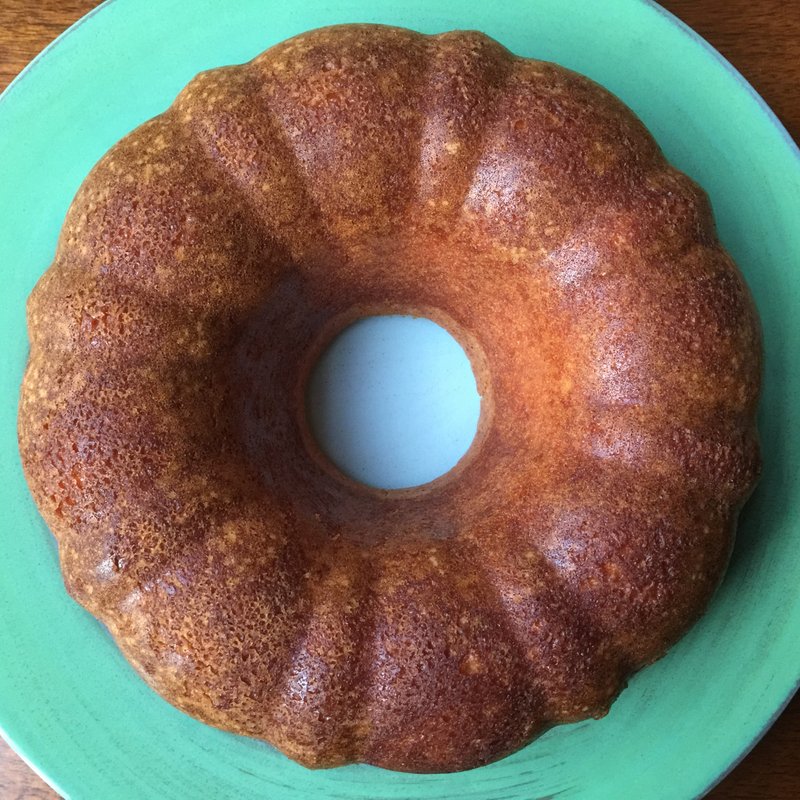For years I've avoided baking with cake flour.
I know. I know. The lower protein flour bakes lighter, more tender cakes.
I won't argue with that.
But cake flour -- at least in my experience -- tastes off and it smells bad. Not in a rancid, old way, but still quite unpleasant. And baked goods made with it have a weird chemical flavor.
I have friends, some of whom are experienced bakers, who use cake flour in everything and have never noticed an off flavor.
I suspected it was the packaging, as cake flour is sold in a plastic bag inside a cardboard box. I'm not a supertaster, but my sense of taste may be keener than average. Perhaps I was tasting the plastic. The difference was subtle, but it was there nonetheless. Like the difference between a Coke in a glass bottle and an aluminum can.
But after doing a little research, I learned it may not be the plastic at all, but the chlorine used to bleach the flour.
According to articles at thekitchn.com and seriouseats.com most cake flour is bleached with chlorine gas. In addition to giving the flour its bright white color, bleaching also conditions it. Chemically bleached flour is more acidic and absorbs liquid better. It also develops gluten differently. And it has an unusual smell. Something you probably don't notice if you use bleached all-purpose flour as your everyday flour.
Bleached flour is not a bad thing. In fact, depending on what you're making, it is preferred.
However, I tend to bake exclusively with King Arthur Flour, which is unbleached.
I would not describe the aroma of cake flour as bleachy, but I am sensitive to the smell. Cleaners with bleach and indoor swimming pools can trigger asthma attacks, and I can frequently smell the chlorine in my tap water at home. So it makes sense to me that the residual aroma of the bleaching process is what I find off-putting about cake flour.
But there's nothing off-putting about this Bundt cake. I think the cake is delicious naked, but if you prefer dressing it up a bit, a light dusting of confectioners' sugar or dollop of whipped cream wouldn't hurt.
Feel free to make this Bundt cake with cake flour, or do what I do, substitute a mix of all-purpose flour and cornstarch.
Separating the eggs and whipping the whites to soft peaks before folding them into the batter helps keep this cake light and tender, regardless of what type of flour you use.
Lemon-Buttermilk Bundt Cake
2 3/4 cups cake flour, plus more for dusting (see note)
1/2 teaspoon baking soda
1/2 teaspoon kosher salt
1 large lemon
3/4 cup buttermilk (I used full fat)
5 eggs, separated
2 1/4 cups granulated sugar, divided use
3/4 cup butter, softened (I used salted)
Heat oven to 325 degrees. Generously butter and flour a 12-cup Bundt pan.
In a bowl, whisk the flour, baking soda and salt; set aside.
Zest (I use a Microplane brand) and juice the lemon. Set zest aside.
Combine the juice in a spouted measure with the buttermilk.
In a stand mixer fitted with the whisk attachment, combine the egg whites and 3 tablespoons of the sugar. Beat on medium speed for 2 minutes or until whites are thick and billowy. Peaks should be soft. Transfer beaten whites to a bowl.
Add the remaining sugar and lemon zest to the now empty mixing bowl. Using the paddle attachment, mix on low speed for about 1 minute, or until zest and sugar are thoroughly combined. Add the butter and mix on medium-low until combined, then increase speed and beat for 3 minutes or until pale and fluffy. Reduce speed to low and add yolks, one at a time, scraping paddle and sides of bowl as necessary. Add one-third of the flour mixture; mix on low. Add half of the buttermilk mixture and mix well. Repeat. Add the remaining flour and mix again until no dry streaks remain. Fold in the egg whites, mixing gently until no white streaks remain, but not so much that the batter deflates.
Transfer batter to the prepared pan. Bake 55 to 65 minutes or until golden brown, rotating pan halfway through. Cool cake in pan on a wire rack for 15 minutes, then invert to remove pan and cool completely.
Note: To use all-purpose flour instead of cake flour, measure 3 cups all-purpose flour; remove 9 tablespoons. Add 9 tablespoons cornstarch. Sift thoroughly. This will make 1/4 cup more than necessary for this recipe.
Food on 09/07/2016
